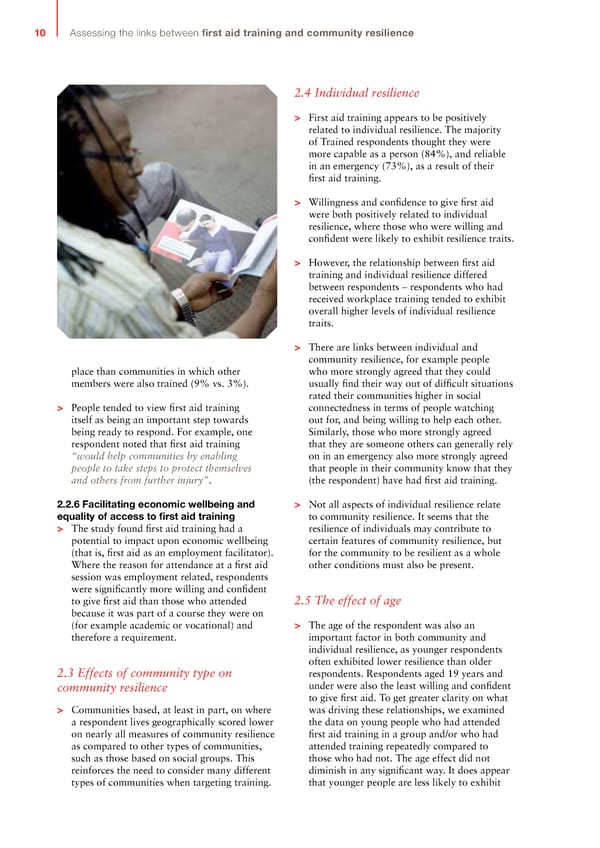10 Assessing the links between first aid training and community resilience 2.4 Individual resilience > First aid training appears to be positively related to individual resilience. The majority of Trained respondents thought they were more capable as a person (84%), and reliable in an emergency (73%), as a result of their first aid training. > Willingness and confidence to give first aid were both positively related to individual resilience, where those who were willing and confident were likely to exhibit resilience traits. > However, the relationship between first aid training and individual resilience differed between respondents – respondents who had received workplace training tended to exhibit overall higher levels of individual resilience traits. > There are links between individual and community resilience, for example people place than communities in which other who more strongly agreed that they could members were also trained (9% vs. 3%). usually find their way out of difficult situations rated their communities higher in social > People tended to view first aid training connectedness in terms of people watching itself as being an important step towards out for, and being willing to help each other. being ready to respond. For example, one Similarly, those who more strongly agreed respondent noted that first aid training that they are someone others can generally rely “would help communities by enabling on in an emergency also more strongly agreed people to take steps to protect themselves that people in their community know that they and others from further injury”. (the respondent) have had first aid training. 2.2.6 facilitating economic wellbeing and > Not all aspects of individual resilience relate equality of access to first aid training to community resilience. It seems that the > The study found first aid training had a resilience of individuals may contribute to potential to impact upon economic wellbeing certain features of community resilience, but (that is, first aid as an employment facilitator). for the community to be resilient as a whole Where the reason for attendance at a first aid other conditions must also be present. session was employment related, respondents were significantly more willing and confident to give first aid than those who attended 2.5 The effect of age because it was part of a course they were on (for example academic or vocational) and > The age of the respondent was also an therefore a requirement. important factor in both community and individual resilience, as younger respondents often exhibited lower resilience than older 2.3 Effects of community type on respondents. Respondents aged 19 years and community resilience under were also the least willing and confident to give first aid. To get greater clarity on what > Communities based, at least in part, on where was driving these relationships, we examined a respondent lives geographically scored lower the data on young people who had attended on nearly all measures of community resilience first aid training in a group and/or who had as compared to other types of communities, attended training repeatedly compared to such as those based on social groups. This those who had not. The age effect did not reinforces the need to consider many different diminish in any significant way. It does appear types of communities when targeting training. that younger people are less likely to exhibit
 Assessing the Links Between First Aid Training and Community Resilience Page 11 Page 13
Assessing the Links Between First Aid Training and Community Resilience Page 11 Page 13